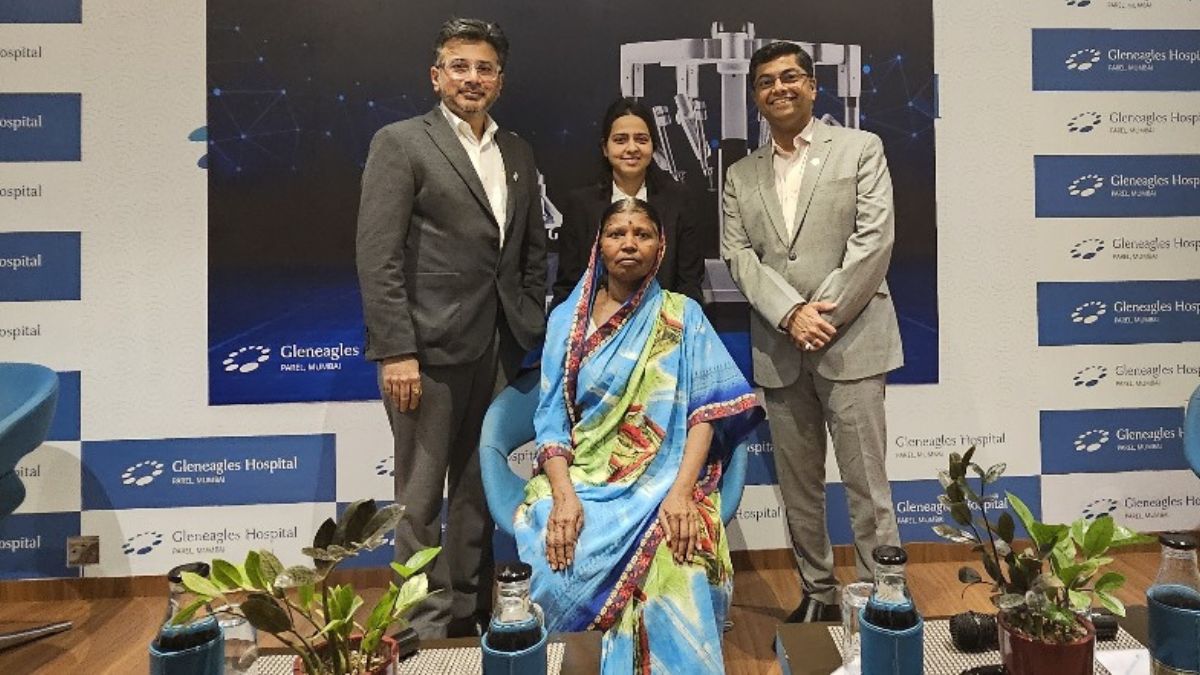
Gokula Patil, a 60-year-old farmer from Kolhapur district, Varnanagar was visiting her son in Mumbai when she presented with a significant swelling on the left side of her neck. Diagnosed four years ago with benign thyroid swelling, she had been managing her condition conservatively. However, over the last few years, the swelling has progressively increased in size.
Table of Content:-
To understand her case, the Onlymyhealth team spoke to Dr Jignesh Gandhi, Senior Laparoscopic and Robotic Surgeon, Gleneagles Hospital, Mumbai.
Diagnosing The Cause Of Thyroid Swelling
Upon evaluation using sonography and a CT scan, multiple nodules were discovered on Paril’s left thyroid gland, with a smaller nodule on the right side. A biopsy confirmed the benign nature of these nodules.
Patil was then referred to an endocrinologist for further assessment. Given the nodules' growth, a thyroidectomy was deemed necessary.

What Is A Thyroidectomy?
Thyroidectomy is a surgical procedure to remove all or part of the thyroid gland. According to the British Thyroid Foundation, the thyroid is a small, butterfly-shaped gland located at the base of your neck. Despite its size, it plays a crucial role in regulating many vital bodily functions:
- Metabolism
- Heart rate
- Body temperature
- Digestion
- Brain development
RABIT Approach For Thyroidectomy
Under the expertise of Dr Gandhi assisted by the Da Vinci robotic system, Patil underwent the RABIT (Robotic-Assisted Breast-Axillo Insufflation Thyroidectomy) procedure. This technique has revolutionised thyroid surgery by:
- Offering a minimally invasive alternative to traditional methods.
- Enhancing surgical accuracy and reducing trauma, leading to smaller incisions and minimal scarring.

According to a study published in the International Journal of Clinical Oncology, RABIT is a new way to remove the thyroid gland using a robot. It's considered safe and effective. Here’s what makes it special:
- Clear View: The surgeon can see the thyroid gland clearly, just like in traditional open surgery.
- Preserves The Thyroid: The thyroid gland is kept intact during the operation.
- Easier To Handle: There's an extra tool to help the surgeon work with the thyroid gland.
- Less Chance Of Robot Bumping: The robot arms have plenty of space to move without hitting each other.
- Better Scars: Because the cuts are very small and hidden, the scars are barely noticeable.
Thus, it translates to quicker recovery, less postoperative pain, and a significantly lower risk of complications for patients. For doctors, the robotic system provides enhanced visualization and dexterity, allowing for meticulous dissection and preservation of vital structures.
Also Read: Ayurveda For Thyroid: Expert Shares 8 Ayurvedic Herbs That Can Improve Your Thyroid Health
Dr Gandhi elaborated on the procedure, “Traditional open surgery often results in large visible scars and longer recovery times. The RABIT technique involves small 8 mm incisions in hidden areas like the axilla and along the areolar regions, avoiding visible neck scars and preserving muscle integrity. This results in minimal post-operative pain and faster healing. The entire procedure lasts 1-2 hours with minimal blood loss, ensuring the preservation of critical structures like the parathyroid glands and the recurrent laryngeal nerve.”
Expressing her gratitude, Patil said, “I am deeply thankful for this life-changing procedure. After years of discomfort, I am now symptom-free and able to resume my daily activities without any visible scars or pain.”
Also watch this video
How we keep this article up to date:
We work with experts and keep a close eye on the latest in health and wellness. Whenever there is a new research or helpful information, we update our articles with accurate and useful advice.
Current Version